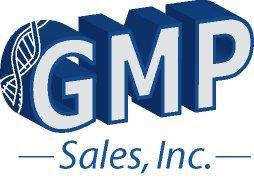The Future of
Laboratories
Precision and Efficiency with
Advanced Liquid Handling Systems
Liquid handling platforms are specialized systems designed for the precise and efficient management of liquid samples in laboratory environments. These systems are particularly vital in fields such as biology and chemistry, where handling small, exact volumes of liquid is essential. The main functions and characteristics of these platforms include:
Core Purpose: The fundamental task of these platforms is the movement of liquid samples from one place to another within a lab. This is critical for various testing and analysis procedures, often involving the manipulation of minuscule liquid volumes
Enhanced Productivity through Automation: Utilizing machines and computer systems for tasks typically done by humans, leading to faster and more efficient work. Examples include robots in factories assembling parts tirelessly or computer programs sorting information swiftly. This automation results in completing more work in less time, with fewer errors, thus significantly improving work quality and output.
Innovative Technologies in Liquid Handling: Contemporary liquid handling systems in laboratories integrate advanced technologies and materials to enhance performance. This includes state-of-the-art technology for both manual and automated pipetting procedures, ensuring accuracy and reliability, crucial in life sciences. High-throughput screening, robotics, and automation are also key, offering advanced reagent reservoirs adaptable to various systems, thereby increasing experiment precision and throughput. Additionally, automated pipetting reduces human error and improves task efficiency, essential for precise sample preparation and analysis, making these technologies fundamental in modern scientific research and industrial applications.
Transition from Manual to Automated/ Robotic Systems: The shift from performing tasks by hand to using machines or computer software for the same tasks. Similar to the evolution from hand-washing clothes to using washing machines, this transition in workplaces involves replacing manual labor with automation. This change results in faster and more accurate task completion, increased productivity, and allows workers to focus on tasks that require creativity and decision-making skills. Shifting human focus to creative and decision-making tasks in the wake of automation brings several added advantages. It sparks greater innovation as employees, no longer burdened by repetitive tasks, can channel their efforts into creative problem-solving and idea generation. This transition also enhances strategic thinking and planning capabilities, crucial for long-term organizational growth.
Liquid handling platforms are the unsung heroes of modern labs, revolutionizing how liquids are managed in scientific settings. Imagine the precision of a skilled artisan combined with the speed of a high-tech machine - that's what these platforms bring to the table. They're like the Swiss Army knife for researchers, equipped with an array of advanced features and cutting-edge technology, ensuring that every drop of liquid is handled with utmost precision and efficiency. In the world of scientific exploration and experimentation, these platforms are more than just tools; they're the key to unlocking new discoveries and pushing the boundaries of what's possible in research and testing.


